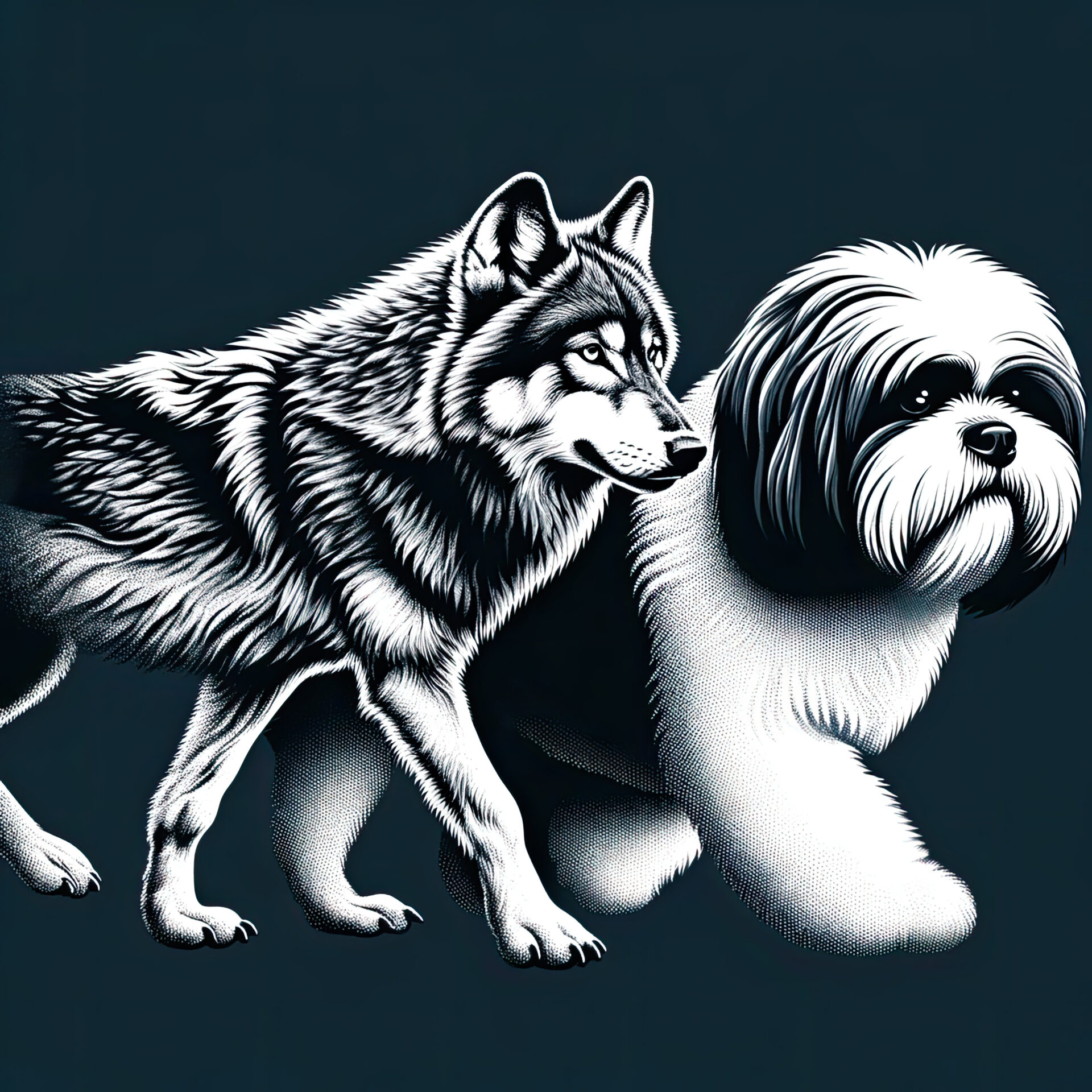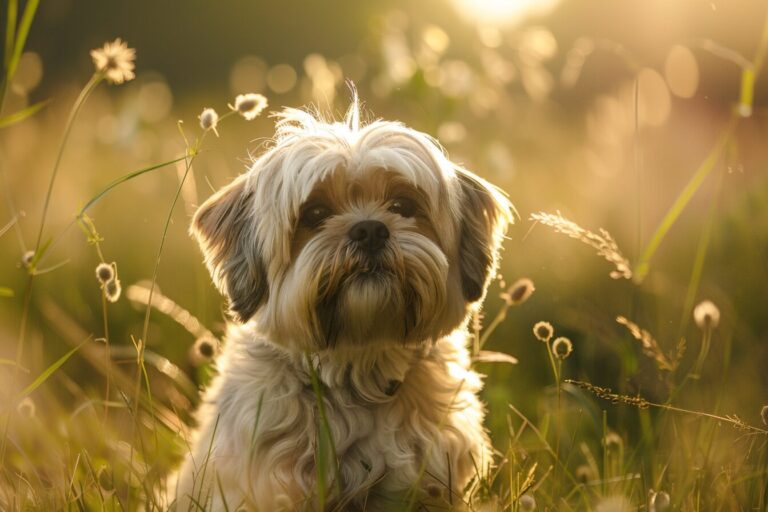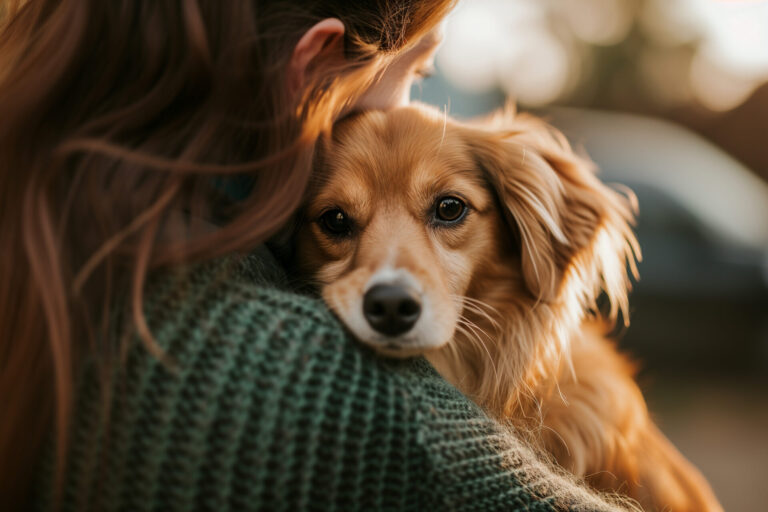Long before the internet’s obsession with cute dog TikToks and instagrams, our ancestors formed an extraordinary bond with our doggos. This bond was not just for companionship; it was a matter of survival. Early humans recognised the potential in wolves, the ancestors of modern dogs, as hunting partners and protectors. This relationship, where both species benefited, marked the beginning of dog domestication.

Life before the leashes…
The ancestors of our dogs today basically roamed free, living a life wildly (pardon the pun) different from the pampered pets we know today. These pre-domesticated dogs, resembling wolves more than the breeds we’re familiar with, led a life governed by the raw rules of nature.
Their world was one of survival, where strength and instinct ruled. These early dogs lived in packs. This is a social structure that provided them with a tactical advantage in the wild. The pack mentality, a trait still observed in many dog breeds, was crucial for their survival. It allowed them to hunt effectively and protect each other from the myriad threats of their environment.
All about the hunt…
Hunting was the cornerstone of their existence. With a diet primarily composed of meat, these wild dogs were skilled predators. Their keen senses of smell and hearing were pivotal in tracking down prey, and their strong, agile bodies enabled them to take down animals much larger than themselves. This predatory lifestyle required a high level of physical fitness and intelligence, traits that have been passed down to modern dogs.
But it wasn’t all about the hunt. The social structure of these early dogs played a big role in their daily lives. They communicated with each other through a system of vocalisations, body language, and scents. This was vital for maintaining the hierarchy within the pack and coordinating during hunts.
The lives of these wild dogs were also closely tied to the rhythms of nature. They migrated with the seasons, following the movements of their prey. This lifestyle meant that they were constantly adapting to different environments, from dense forests to open plains.
In the wild, the early dogs played a crucial role in their ecosystems. As apex predators, they helped control populations of other animals. This role is a testament to their importance in the natural world. This is a role that has been lost as they transitioned into domesticated life.
They were masters of their own fate. It’s a reminder of the wild origins of our beloved dogs. As we look into the eyes of our cute doggos, we see a link to a wild, untamed past.
A tale of tails: the evolution from wild to mild
The journey from the wilderness to our cosy homes is a fascinating chapter in the history of dogs. Going from wild to mild is a story of adaptation, survival, and an extraordinary bond being formed.
Initially, the interaction between early humans and wild dogs was likely born out of necessity and opportunism. Humans, with their ability to control fire and produce excess food, attracted the attention of these clever animals. For the wild dogs, human camps were a source of easy meals, as they scavenged leftovers. Over time, a natural selection process took place. Those dogs less fearful and more tolerant of human presence had a better chance of survival. They were the ones who thrived around human settlements, gradually becoming accustomed to human company.
This interaction marked the beginning of a genetic divergence that led to the domestic dog. The less aggressive, more sociable wolves had an advantage. They started to breed amongst themselves. The process was gradual, (taking thousands of years!). It involved changes not only in behaviour but also in physical appearance. Dogs began to exhibit different coat colours, floppy ears, and shorter snouts. These traits were rarely seen in wild dogs.
Understanding human emotions…
Alongside these physical changes, domesticated dogs developed an enhanced ability to read and respond to human emotions and commands. This was likely a result of humans favouring dogs that were easier to train. Over time, this selective breeding intensified these traits. That led to the amazing range of breeds we see today.
The change from wild to mild was influenced by the needs of humans. Dogs started to take on new roles. From hunting and guarding to herding and companionship. The roles of these dogs matched the needs of their humans.
Man’s best friend: the enduring legacy of domestication
In modern times, dogs have shown an incredible ability to adapt to different roles. Therapy dogs, for example, provide comfort and emotional support to those in need. This shows their innate ability to sense and alleviate human distress. Service animals, trained to assist people with disabilities, show remarkable intelligence and dedication. They do tasks that allow humans to lead more independent lives.
Dogs have taken on roles in various specialised fields as well. From aiding in search and rescue operations to detecting illegal substances and even assisting in medical diagnoses, their capabilities seem to have no bounds. This versatility is a direct result of their evolution alongside humans, honing skills that go beyond basic survival instincts.
Maybe the biggest impact of domestication is seen in the pet we hold dear each day. The bond us and our dogs is built on trust and affection. It may seem simple but there is also complex emotions at play. Dogs have now become known universally as ‘man’s best friend.’
An unbreakable bond
In summary, the bond between humans and dogs is a result of a long evolutionary and historical process. Early humans recognised the potential in wolves as hunting partners and protectors. Over time, that evolved, with less aggressive wolves having a survival advantage, eventually leading to the evolution of a more docile, human-friendly dog.
Today, dogs are an integral part of human society, serving roles far beyond their original purpose, such as therapy dogs and service animals. The American Veterinary Medicine Association describes the human-animal bond is defined as a “mutually beneficial and dynamic relationship between people and animals that is influenced by behaviours that are essential to the health and wellbeing of both”.




Leave a Comment